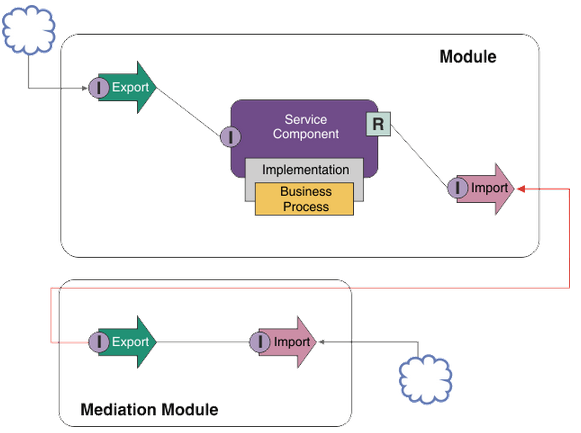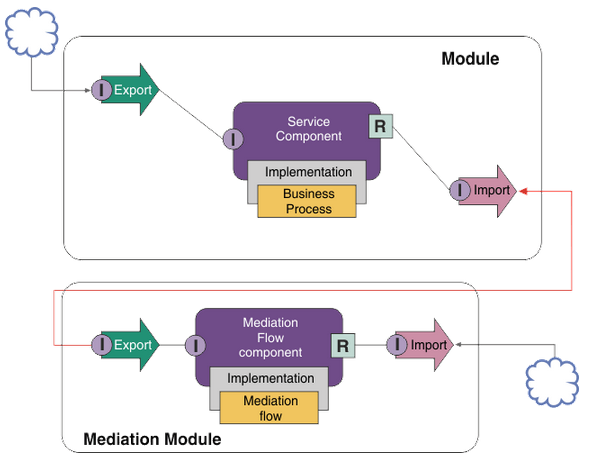About this task
Bindings for imports and exports have different purposes. An import binding describes the specific way an external service is bound to an import component. An export binding describes how that export (or service) will be published or made available to clients outside the module.
When you use the palette in the assembly editor to create an import, you can generate a Web service binding by following these steps:
Procedure
- If there is no interface defined on the import, add the interface first or generate an interface by wiring the import to an SCA component. See the related tasks for instructions on adding the interface.
- Under Outbound Imports, drag Web Service onto the canvas. Add your interface.
- Alternately, under Components, drag an import onto the canvas. Right-click on the import and select Generate Binding > Web Service Binding. Because the import will connect to some specific service outside the module, you will need to identify that service. The editor cannot generate the binding automatically, as it can in some circumstances for an export.
- In the Import Details dialog box, choose one of the three options described below. The first choice sensible choice for most situations.
- Choose an existing Web service port to use for the binding. The port must be in the module or in a shared library. Click Browse to see which ports are available. The editor extracts the needed information from the port WSDL file.
- Generate a new Web service definition and implementation. This choice is for advanced users. Options differ depending on whether you are working top-down (creating an import before creating an export) or bottom-up (you are choosing an existing export from which to import a service). The Web Services wizard will guide you through the choices you need to make and provide a skeleton of what to implement.
- Do not specify a Web service port at this time. To complete the binding in this approach, you will need to add details in the Properties for this import's binding. If you are creating the import using the palette, you will have to specify a binding type for the external service technology in order to test it.
- If you made the second selection, the Specify the Web Service Binding Target Namespace page will also be used. Select whether you want to use the same namespace as the interface or create a new one:
- Use the port type (interface) namespace - This selection is best suited if you will be merging this service later with other artifacts and exporting everything in a single file. In such cases, the export is simplified if all artifacts share the same namespace.
- Specify a new namespace - This selection is suitable if you want to have a unique namespace for your service.
- The binding will be generated and its icon will change to indicate the type of binding that it has.
- Optional: It is recommended that you set the Join Transaction qualifier so that the import performs the invocation within a transaction. See related information for more details about configuring the Join Transaction qualifier.
What to do next
To change the binding for an import, you can use Regenerate Binding or Remove Binding actions. Imports have binding properties that can be modified in the Properties view. Select the import in the assembly diagram to see its properties in the Properties view.
If you have created a web service port and you drag and drop it onto the assembly editor in order to regenerate a binding, you will only generate a JAX-RPC binding. To properly regenerate with a choice of bindings, you need to remove the binding and then add another one.
For training on IBM Lombardi mail us at [email protected]








 RSS Feed
RSS Feed



